| Designation: | T-72 |
 |
|---|---|---|
| Manufacturer: | JSC Research and production corporation UralVagonZavod | |
| Product type: | Armoured Vehicles | |
| Name: | Main battle tank |
By the mid 1960s the second postwar generation tanks superseded the medium and heavy tanks that had been developed on the basis of the war experience.
The T-72 family tanks are the most typical and wide-spread representatives of this generation. The design work on their development was started in 1967 at the Urals Carriage Making Plant Tank Design Bureau under the supervision of L. Kartsev.
However, L. Kartsev was not fated to see the tanks in mass production. The development work was continued by V. Venidiktov who succeeded L. Kartsev as chief designer.
The tests of prototypes, developed in the town of Nizhny Tagil, confirmed their high effectiveness and reliability. In 1973 the tank was designated the T-72 and adopted for service.
It has a typical general layout featuring the rear transverse arrangement of the engine. The crew consists of three men. The driver mechanic is seated at the front middle of the driving compartment which facilitates tank driving.
The tank commander is seated in the fighting compartment in the middle of the tank hull on the right side of the gun, and the gunner is seated to the left of the gun. The lower part of the fighting compartment mounts the automatic loader carousel whose introduction made it possible to reduce tank height and its armor plated area, thus improving protection without changing the designed weight and decreasing the ammunition stowage hit probability.
Located in the stern portion of the tank is the power plant compartment with a transversely arranged engine, air cooling system and input reduction gear connecting the crank-shaft with final output gearboxes.
The T-72 tank served as a base for the development of a series of tracked vehicles for military use, such as the T-72K and T-72AK command tanks, BREM-1 recovery and repair vehicle, MTU-72 bridge-laying tank, IMR-2 obstacle clearing engineer vehicle, etc.
There are cine-simulators developed for T-72 tanks in order to train personnel in driving and TKNT-3B electronic simulators to train tank commanders and gunners in firing, which will make it possible to save tank operating hours during crew training.
The T-72A tank was mass produced from 1979 to 1985. Its main differences from the base model consisted in the installation of the TPDK-1 laser ranging sight, TPN-3-49 gunner's night sight with the L-4 searchlight, continuous side anticumulative screens, 902B smoke grenade launching system, 2A46 gun instead of the 2A26M2, TVNE-4B driver's night vision device and the V-46-6 engine. The T-72M and T-72M1 export versions of the T-72A tank were manufactured with an additionally strengthened frontal part of the hull and combined armor of the turret. Tanks of this series were exported to the former Warsaw Treaty member states, India, Iran, Syria, Algeria, Kuwait, Libya, Finland and Yugoslavia.
The T-72B tank has been manufactured since 1985. Its export version was designated the T-72S. The difference between the T-72A and T-72B tanks consisted mainly in the installation of the 2E42-2 stabilizer with an electrohydraulic elevating drive and an electromechanical traversing drive instead of the 2E28M two-plane electrohydraulic stabilizer, a guided weapons system, removable container explosive-reactive armor, and the V-84 engine instead of the V-46-6.
Let us consider the combat properties of the T-72B tank in more detail.
For its firepower, i.e., the capability to defeat the opposing enemy assets by direct fire, the tank depends, from the technical point of view, mainly on the quantity and quality of the on-vehicle weapons and their servicing systems.
The primary weapon of the T-72B tank is the 125mm 2A46M special tank smoothbore gun-launcher featuring an increased barrel length and decreased normal recoil. Owing to the updating of the gun, its firing accuracy and operational properties were substantially improved. Moreover, the gun's capability to fire guided projectiles made it possible to increase the effective range of fire at armored targets to 4,000 m (compared with 3,000 m for the M1A2 and Leopard and 3,400 m for the Leclerc), with a 0.8 probability of hitting a tank-type target. In addition, the gun design enables the barrel to be replaced in field conditions owing to the introduction of the barrel-to-breech ring quick-disconnect threaded joint.
The gun breech mechanism permits it to be opened in two cycles, thus reducing the effort applied for the purpose. The recoil brake cylinders are secured symmetrically to the gun barrel, which favorably contributes to fire accuracy due to the absence of gun torque during recoil. The recoil system provides for free recoil until the projectile exits from the barrel bore.
The gun is provided with a built-in device enabling the crew to collimate the sight without leaving the tank.
The fire is delivered by separate case artillery rounds with hypervelocity armor-piercing (HVAP), high-explosive anti-tank (HEAT), HE fragmentation projectiles and guided missiles having a HEAT warhead. All artillery rounds have the same charge with a partially combustible case. The case, after the round is fired, is automatically ejected by the disposal mechanism through a special hatch in the turret roof.
The 3UBK-14 round consists of the 9M119 missile and a propellant. Its dimensions are similar to those of an ordinary artillery round; therefore, its loading into a cell of the automatic loader carousel and subsequently into the gun does not differ from the loading of an artillery round. The gun ammunition load consists of 45 rounds, 22 of which are arranged in the automatic loader carousel.
The 9K120 guided weapon system ensures daytime stationary and short-halt fire at a range of 100 to 4,000 m. It is equipped with a semiautomatic jam-proof laser beam missile control system.
The fire control system comprises the 1A40-1 sighting complex based on the TPD-K1 laser ranging sight of the T-72A tank. The field of view of the sight is stabilized in two planes.
For firing artillery rounds at night and launching guided missiles in daytime, provision is made for the 1K13-49 tracker, which is included into the 9K120 guided weapon system. It can operate in both the active and the passive mode.
The gun is stabilized in two planes by means of the 2E42-2 stabilizer provided with the electrohydraulic elevating drive and electromechanical traversing drive.
Secondary weapons are the 7.62mm PKT coaxial machine gun and the 12.7mm NSVT antiaircraft machine gun, which can be manually controlled from the tank commander's station. The coaxial machine gun ammunition allowance is 2,000 cartridges and that of the antiaircraft machine gun 300 cartridges.
The tank's protection, i.e., its ability to withstand the effects of enemy weapons without substantial damage to its combat capabilities, makes it possible for the crew to accomplish their assigned combat missions.
The armor (passive) protection of the hull and turret front section is represented by multilayer armor panels ensuring the tank invulnerability to most types of HVAP and HEAT projectiles of tank (antitank) guns. A high resistance to HEAT ammunition is attained through the installation of suspended explosive reactive armor.
Since 1988, built-in explosive reactive armor has been used.
The tank hull is a welded structure. The turret is cast, and its frontal part has variable inclination angles. The hull sides are protected by anticumulative screens.
The tank boasts a higher level of radiation protection than the T-72A tank owing to the use of inner and outer shielding, collective NBC protection system and local protection system of the crew members. The high survivability of the tank on the battlefield is due to its low silhouette (2,226 mm), use of smoke generating equipment and the 902B Tucha smoke screening system, use of a system for protection against napalm effects and the 3ETs13 Iney quick-acting fire-extinguishing equipment. In addition, the tank is camouflage painted to minimize its detection on the battlefield.
The T-72B is provided with equipment for entrenchment, self-recovery and attachment of the KMT-6 mine sweeper.
For its mobility, i.e., its capability to arrive to an assigned area in due time, the tank depends on its power unit, transmission and the track and suspension system. High mobility of the tank is attained owing to its multifuel four-stroke liquid-cooled V-84-1 diesel engine, which is supercharged from a centrifugal blower. In addition, provision is made for inertial supercharging. The engine power is equal to 618 kW (840 hp). It can use diesel fuel (DL, DZ, DA), rocket fuel (T-1, TS-1, T-2) and automobile gasoline (A-66, A-72). The main method of engine starting is by the electric starter, then comes the compressed air starting method. The engine can also be started by towing the tank or by using an external electrical power source. To warm up the engine and its accessory systems before starting in cold weather, provision is made for a heating system. The engine design is derived from the engines of earlier makes, which facilitates its production and maintenance.
The mechanical planetary transmission consists of an input gear unit, two final output gearboxes and two final drives. The cushioning system uses an individual torsion-bar suspension with power-intensive hydraulic vane-type shock absorbers mounted on the 1st, 2nd and 6th suspension units of each side. The dynamic travel of the rear wheels is increased to 325 mm (versus 285 mm in the T-72A tank). The tank uses rubber-covered dual road wheels and internally cushioned support rollers.
The tank is provided with underwater stream crossing equipment to negotiate 5-m deep and 1,000-m wide water obstacles. The tank is capable of crossing 1.2-m deep fords without preparation, and 1.8-m deep fords with a 10-min preparation.
The tank command controllability, consisting in the tank's suitability for teamwork between the crew members and actions as a part of a subunit, is attained through the use of observation and reconnaissance devices, the R-174 interphone, R-173 radio set, R-173P radio receiver which make it possible to maintain communication within a range of at least 20 km both when stationary or when moving over moderate terrain.
|
||||||||||||||||||||||||||||||||||||||||||||||||||||||
|
||||||||||||||||||||||||||||||||||||||||||||||||||||||||||||||||||||||||||||||||||||||||||||||||||||||||||||||||||||||||||||||
|
|||||||||||||||||||||||||||||||||||
All contracts...
Related Articles |
|
Problems of Russian land military vehicles with diesel engines (24.12.2020) |
|
Problems of Russian Vacuum APFSDS-T projectile (25.01.2019) |
|
Uralvagonzavod has prepared a new tank engine for serial production (29.11.2017) |
|
Bumar Labedy represents the PT-17 MBT on the MSPO 2017 (07.09.2017) |
|
Kratos Converts Russian T-72 Tank to Unmanned Operation (18.04.2017) |
|
Missile Tank (03.01.2013) |
|
UVZ displaying fighting vehicles in RSA (25.09.2012) |
|
Raytheon Teams With Larsen & Toubro on India Tank Upgrade Proposal (16.02.2010) |
|
Missile maker Raytheon bidding for tank upgrade in India (15.02.2010) |
|
The Chairman of the Ukrainian Parliament Drove the Oplot Main Battle Tank (17.06.2009) |
|
Russian Defense Industry At DEFEXPO INDIA-2008 (14.02.2008) |
|
Leader of the Ukrainian armoured construction – SOE KMDB – is 80 years old (06.09.2007) |
|
Infantry Fighting Vehicle (29.01.2007) |
|
Russia to supply $4 billion worth of arms to Algeria (30.01.2006) |
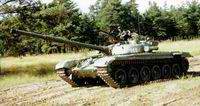 |
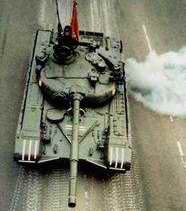 |
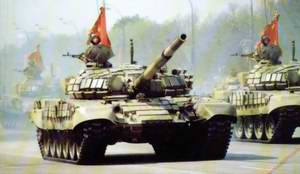 |
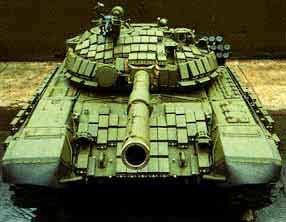 |
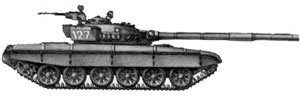 |
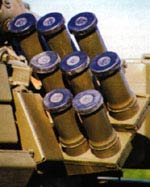 |
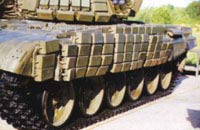 |
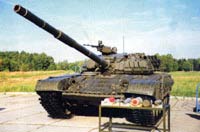 |
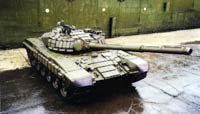 |
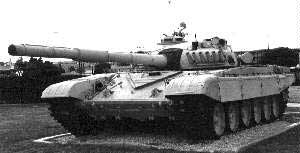 |
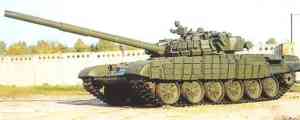 |
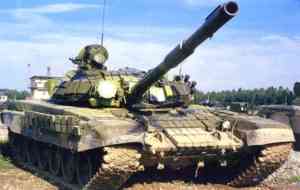 |
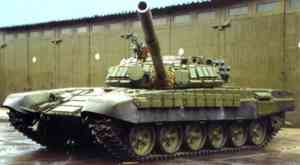 |
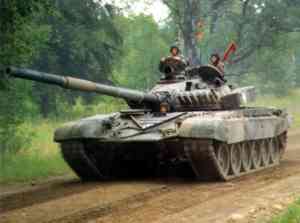 |
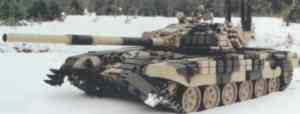 |
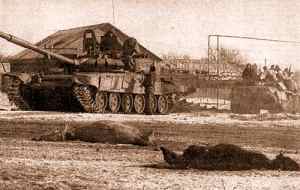 |
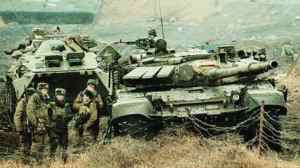 |
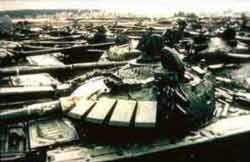 |
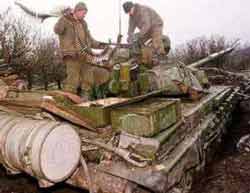 |
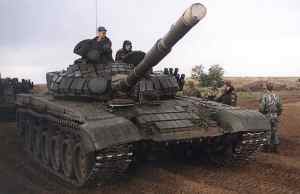 |
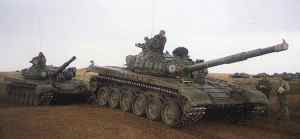 |







































